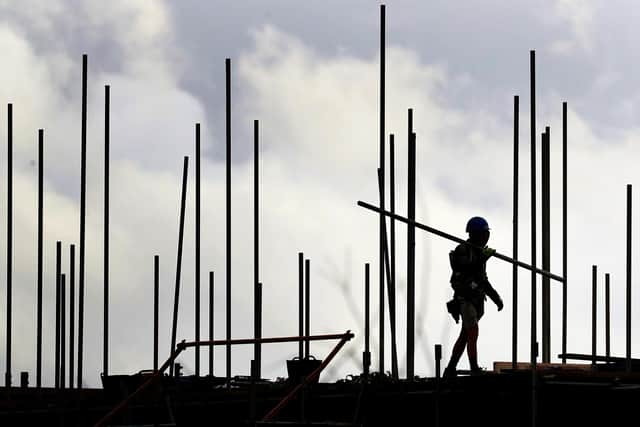Not building any more homes isn't an option so offsetting nutrients in waterways is the way forward - Ritchie Clapson
This time, they announced a change in the rules governing ‘nutrient neutrality’, which solicited a predictably hostile reaction from greener quarters.
Nutrients cause algae to thrive in our waterways, suffocating other aquatic life. While they occur in the sewage and surface water run-off produced by residential homes, the vast majority comes from agricultural farmland where nitrate and phosphate fertilisers are used, and also from sub-standard water treatment by the water companies.
Advertisement
Hide AdAdvertisement
Hide AdIronically, it’s this water treatment system that new homes are plumbed into, unlike farmland which runs off directly into our waterways.


Six years ago, Natural England stipulated that certain new homebuilding schemes must be ‘nutrient neutral’ and developers would need to prove that they would not be adding to the nutrient burden before planning permission could be granted.
This affected 74 planning authorities who would now be open to legal challenge if they granted planning permission without the required neutrality proof in place. Since any new home would obviously contribute nutrients, it resulted in no new homes being built at all – an obvious outcome that could and should have been predicted and addressed six years ago.
The government’s latest proposals allow for the nutrients produced by housebuilding to be offset by other means, including beefing up our water treatment systems for which government funding will now be available. Environmentalists are predictably appalled, but a dose of reality is needed; not building any more homes isn't an option so offsetting and further investment is a sensible way of striking a balance.
Advertisement
Hide AdAdvertisement
Hide AdThis should remove the blockage while committing funding for nutrient-reducing projects that will be implemented by the water companies who are best placed to deliver them. It should also free up the construction of over 100,000 new homes that are currently in limbo while addressing the nutrient issue head-on. Developers will contribute to the cost of neutrality through a levy on each new home.
However the levy will need to be proportionate to housebuilding’s impact and shouldn’t be used to offset the other nutrient contributors – after all, the prospective owners of these new homes are already creating sewage where they currently live, so the net impact at a national level is not going to be huge. So, there’s a light at the end of the tunnel, but it shouldn’t have taken six years to get there.
It’s not Natural England’s job to worry about housing supply; we need new homes, and we need to protect the environment. It’s the government’s job to bridge the gap between the two.
There is some better news for environmentalists; the government’s renewed focus on housebuilding has also seen a strengthening of the permitted development rights for converting existing commercial buildings into residential. Unused brownfield sites are the low-hanging fruit in the housing crisis.
Advertisement
Hide AdAdvertisement
Hide AdSo, common sense has prevailed, but it’s frustrating it’s taken so long to arrive. The environment and the current housing crisis both need our urgent attention, and the government needs to move more quickly than this if it’s to have any chance of keeping up with the curve.
Ritchie Clapson is co-founder of propertyCEO.